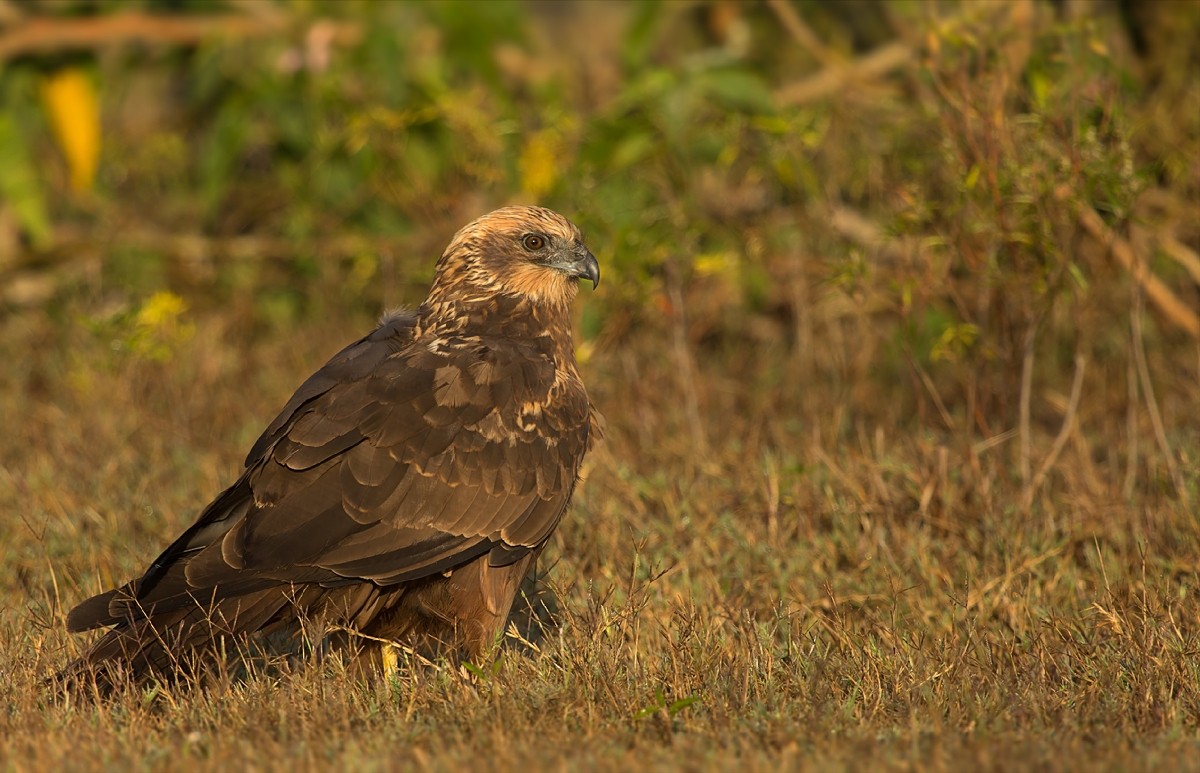Western Marsh Harrier
A species of Harriers, Also known as Marsh Harrier Scientific name : Circus aeruginosus Genus : Harriers
Western Marsh Harrier, A species of Harriers
Also known as:
Marsh Harrier
Botanical name: Circus aeruginosus
Genus: Harriers
Content
Description People often ask General Info
 Photo By Sumeet Moghe , used under CC-BY-SA-3.0 /Cropped and compressed from original
Photo By Sumeet Moghe , used under CC-BY-SA-3.0 /Cropped and compressed from original Description
The western Marsh Harrier’s long tail and wings give the raptor a gangly appearance. It is commonly seen flying low over wetlands and marshes in search of prey. The preferred food sources are small birds and mammals that it catches in its beak or talons. While in flight, the raptor holds its wings in a ‘V’ shape.
Size
56 cm
Life Expectancy
17 years
Nest Placement
Ground
Feeding Habits
Western Marsh Harrier primarily consumes small mammals, birds, insects, reptiles, and frogs, using stealthy aerial hunting techniques. It showcases dietary adaptability, including a variety of prey in its diet.
Habitat
Western Marsh Harrier occupies diverse wetland environments such as marshes, swamps, and areas with dense reed growth, typically around fresh and brackish waters. It adapts to lowland plains up to 2000 meters elevation, chiefly in Asia, and can be found in neighboring terrestrial habitats of grasslands and agricultural fields close to wetlands. Western Marsh Harrier may venture into atypical terrains like forests or mountains during migration or in wintering areas.
Dite type
Carnivorous
People often ask
General Info
Feeding Habits
Bird food type
Distribution Area
This species has a wide breeding range from Europe and northwestern Africa to Central Asia and the northern parts of the Middle East. It breeds in almost every country of Europe but is absent from mountainous regions and subarctic Scandinavia. It is rare but increasing in Great Britain where it has spread as far as eastern Scotland. In the Middle East there are populations in Turkey, Iraq, and Iran, while in Central Asia the range extends eastwards as far as north-west China, Mongolia, and the Lake Baikal region of Siberia. 
Species Status
The western marsh harrier declined in many areas between the 19th and the late 20th centuries due to persecution, habitat destruction and excessive pesticide use. It is a now a protected species in many countries. In Great Britain, the population was likely extinct by the end of the 19th century. A single pair in Horsey, Norfolk bred in 1911, and by 2006, the Rare Breeding Birds Panel had recorded at least 265 females rearing 453 young. It made a comeback in Ireland as well, where it had become extinct in 1918. 